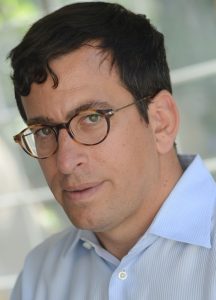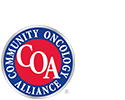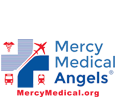NSCLC: Targeting What Drives People’s Cancer
This week, Real World Health Care talks with Edward B. Garon, M.D., Associate Professor of Medicine at the David Geffen School of Medicine at UCLA Health. He specializes in hematology and oncology, with an interest in lung cancer and chest malignancies.
Dr. Garon’s research focuses on the testing and development of targeted therapies and immunotherapies in the treatment of non-small cell lung cancer (NSCLC), including the development of a class of drugs known as PD-1 (programmed cell death-1) inhibitors, which allow immune cells to eliminate cancer. We spoke with Dr. Garon about checkpoint inhibitors, immunotherapies and targeted therapies for NSCLC.
Real World Health Care: Describe your role at UCLA’s David Geffen School of Medicine, especially as it relates to research of non-small lung cancer.

Edward Garon, MD, UCLA Health
Edward Garon: I serve as director of thoracic oncology and conduct both clinical and laboratory research with a focus on translational research to determine lung cancer patient subgroups that are most likely to respond to certain therapies. Instead of looking at NSCLC as one disease, it’s important to personalize therapy and give people the therapies that are appropriate, not just for the disease site origin, but for a disease that’s driven by a particular set of molecular events.
RWHC: What do you think are the biggest challenges relating to NSCLC research and how are those challenges being addressed?
EG: We’ve seen some real progress in NSCLC research, especially in terms of immune checkpoint inhibitors, which unleash a patient’s own T cells to kill tumors. But we’re not yet where we want to be. One of the biggest priorities is identifying more people who will respond to therapies and connecting the right research with the right patient population, especially since targeted therapies currently only apply to a small percentage of the patient population. Although early-phase lung cancer studies in non-metastatic patients have hinted at the potential to use biomarkers to select patients, data from clinical studies have tempered expectations.
RWHC: What do you think are the biggest challenges relating to current NSCLC treatment and how are those challenges being addressed?
EG: In the past 10 years, there has been a push to individualize care for NSCLC, to evaluate individual tumors on individual patients and determine if there are molecular changes or abnormalities in the tumor itself that can dictate whether there are certain therapies that are more or less likely to be effective in any given patient. Treatments for NSCLC have improved somewhat over time, but in patients whose tumors have progressed during or after their initial therapy, the outcomes for additional treatment have been quite poor.
Another challenge for clinicians is the emergence of checkpoint inhibitors, immunotherapies and targeted therapies. We currently have two PD-1 inhibitors available for treating advanced NSCLC, both of which are well-tolerated among patients. The quality and duration of responses to anti-PD-1 therapy can be profound in NSCLC, but some clinicians are not overly familiar with them and how to use them. Much of the experience with these drugs is concentrated in select academic centers. We need wider clinician awareness of which patients are most likely to benefit from therapy, when therapy should be stopped and how toxicity should be managed.
RWHC: Where do you think the biggest opportunities for future advances in NSCLC research and treatment lie?
EG: We will soon see a tremendous amount of data on the combination of checkpoint inhibitors and additional agents. It will be interesting to see both what the data from randomized studies show and how researchers interpret that data in terms of what constitutes a signal and what doesn’t. Careful selection of patients, doses of each agent, and information supporting strategies — concomitant or sequential — is still needed. Another exciting avenue is the potential incorporation of immunotherapy in early-stage disease, locally advanced disease and in first-line therapy for metastatic disease. These agents could become the frontline choice for select patients with stage IV disease versus standard chemotherapy.
RWHC: Why did you get into this field and what continues to inspire you about it?
EG: I became involved in lung cancer as a young physician coming from fellowship training. While there was not a lot of excitement in the field at that exact moment, I saw a good opportunity to be on the leading edge of therapy development. I am fortunate here at UCLA to be part of many of the studies of new drugs that have changed the course of patients’ disease and don’t have the toxicity associated with many chemotherapies. It’s certainly been gratifying to see how new therapies can positively impact patients. Just a few short years ago, NSCLC was seen as a disease that wasn’t particularly immunogenic. Ten years from now, I hope to look back on this exciting time and realize that we have come much farther still.

















